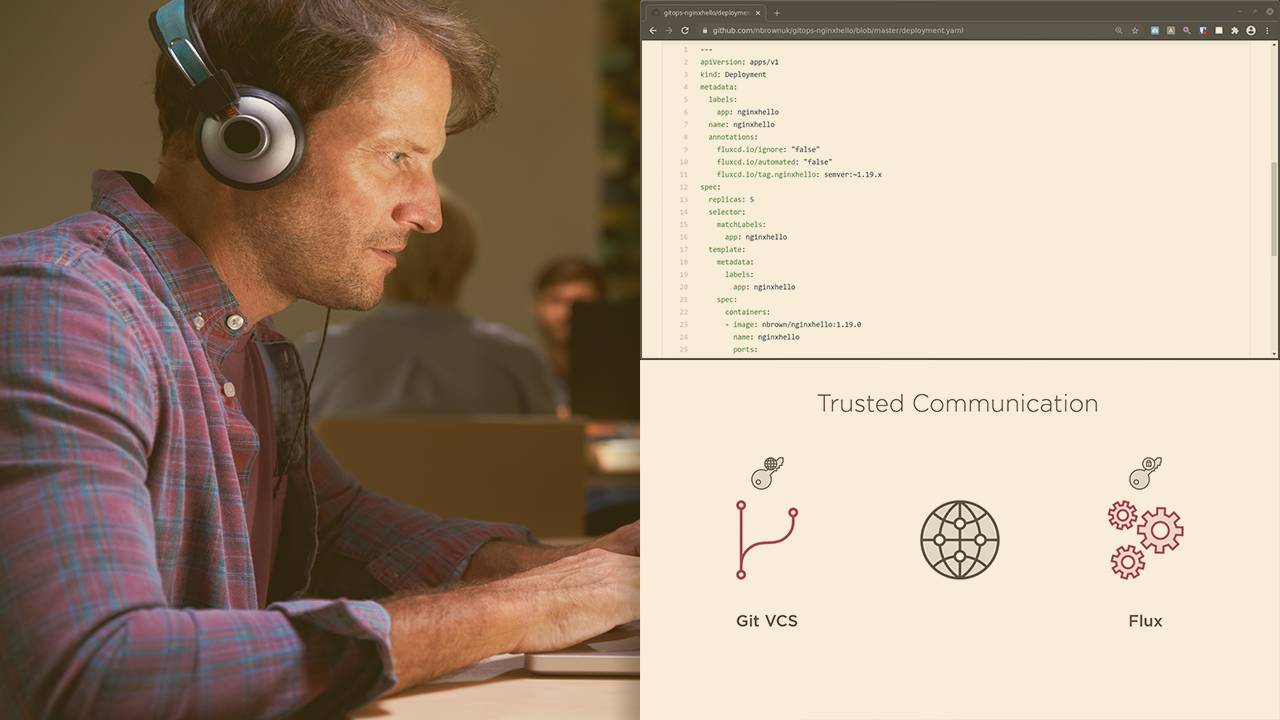- Course
Automating Kubernetes Deployments Using a GitOps Workflow
Deploying applications to Kubernetes clusters in a reliable and repeatable manner is difficult to achieve. This course will teach you how to adopt a GitOps workflow to automate application deployments, using the Flux operator.

- Course
Automating Kubernetes Deployments Using a GitOps Workflow
Deploying applications to Kubernetes clusters in a reliable and repeatable manner is difficult to achieve. This course will teach you how to adopt a GitOps workflow to automate application deployments, using the Flux operator.
Get started today
Access this course and other top-rated tech content with one of our business plans.
Try this course for free
Access this course and other top-rated tech content with one of our individual plans.
This course is included in the libraries shown below:
- Core Tech
What you'll learn
Deploying applications to Kubernetes is straightforward, but reliably maintaining the integrity of application configuration from release to release is a big challenge. In this course, Automating Kubernetes Deployments Using a GitOps Workflow, you’ll learn how to automate and control application deployments using the Flux operator and complimentary tools. First, you’ll discover how Flux can be configured to automate a deployment using Git as a single source of truth. Next, you’ll learn how Flux and the Helm Operator can be combined to automate deployments for your applications configured as Helm charts. Finally, you’ll explore progressive deployments, and how to use Flagger to automate a canary deployment. When you’re finished with this course, you’ll have the requisite knowledge of GitOps workflows, and the technical skills needed to reliably automate continuous delivery of your applications.

